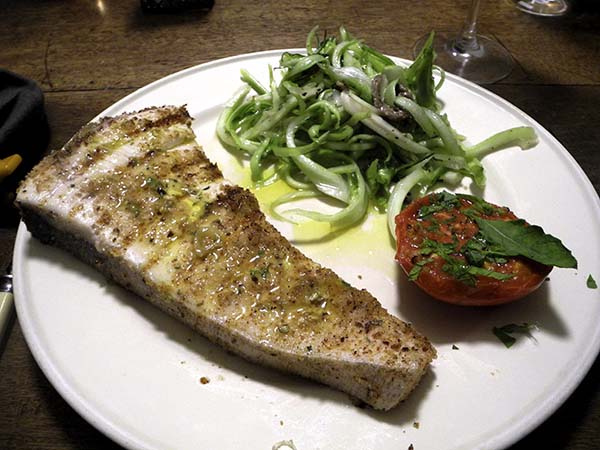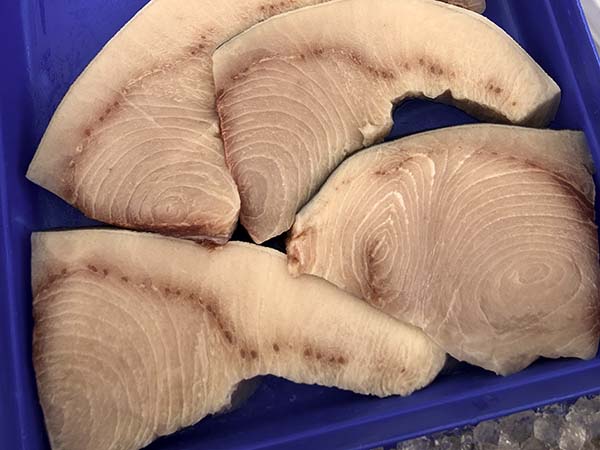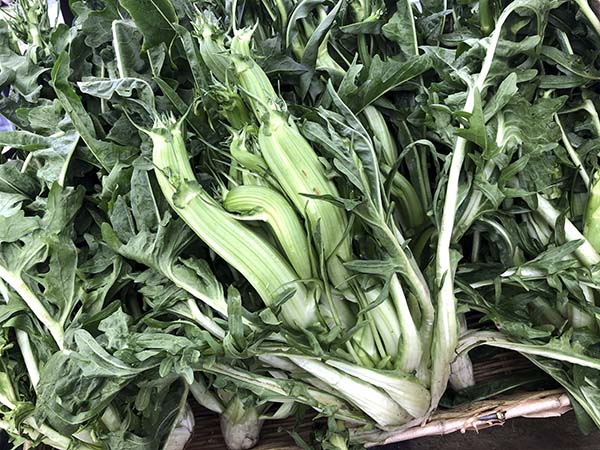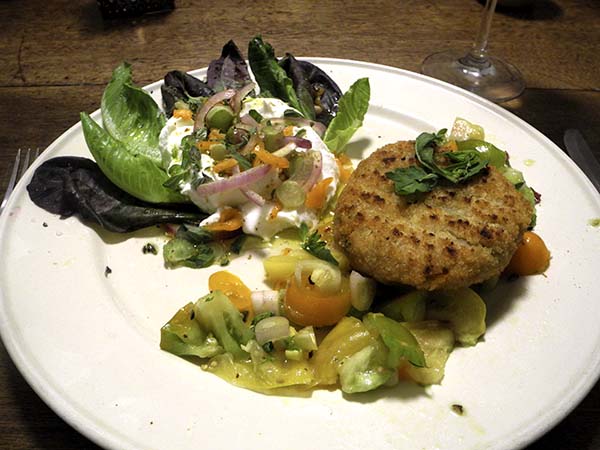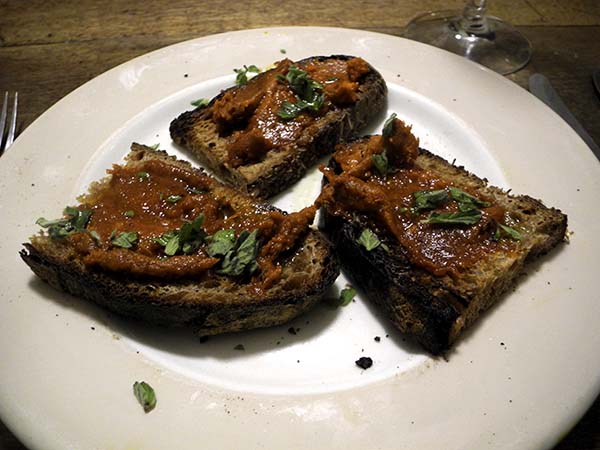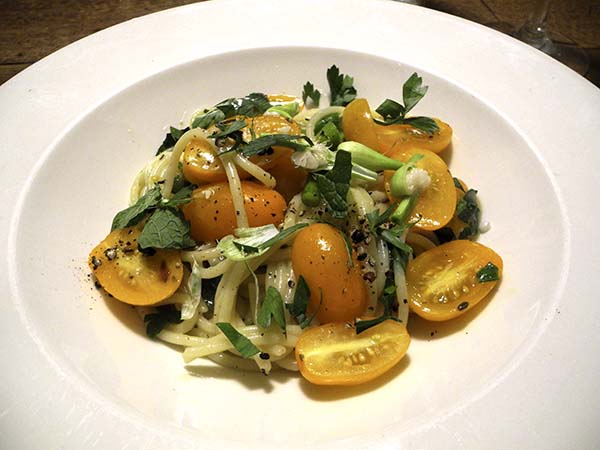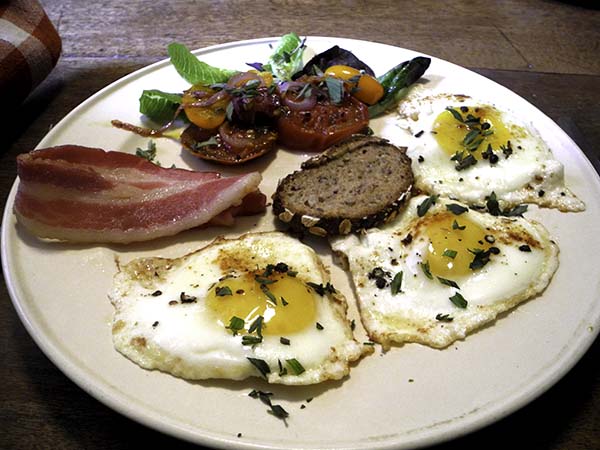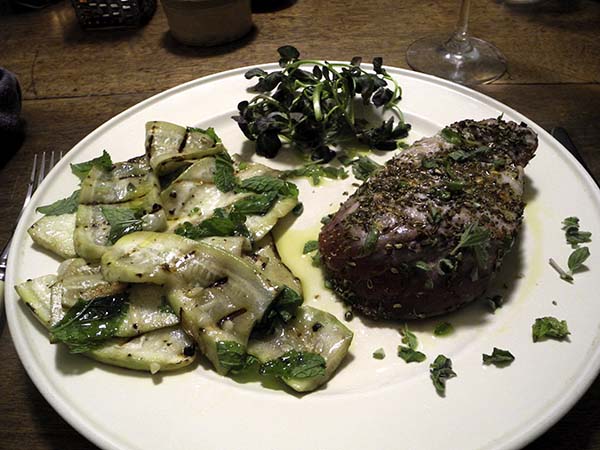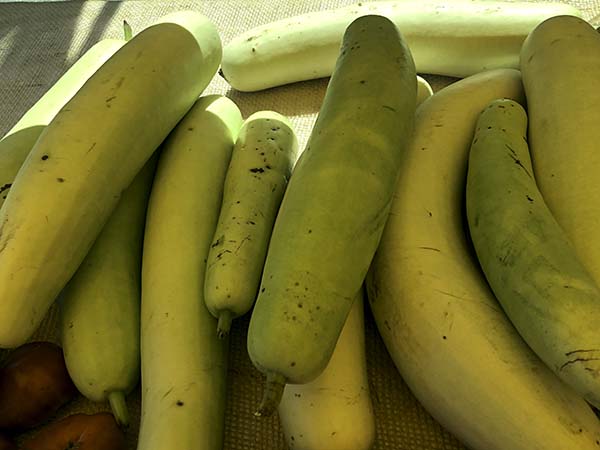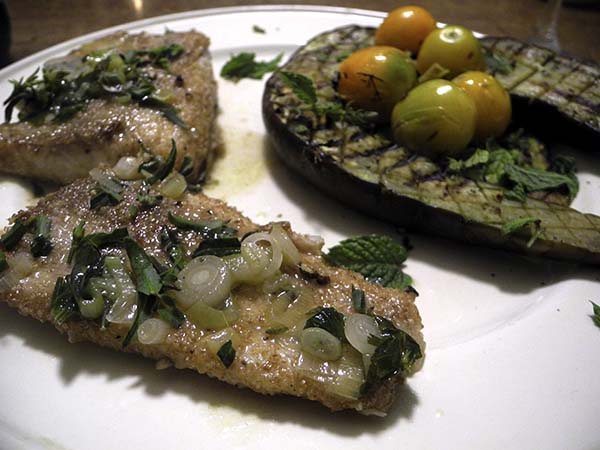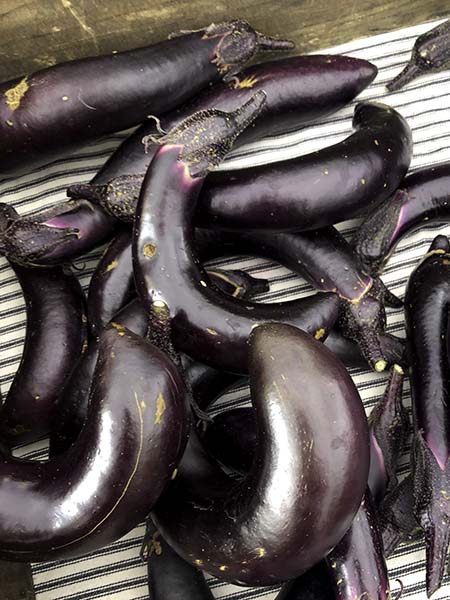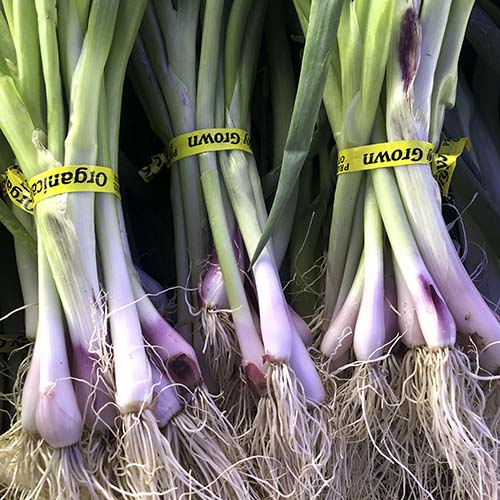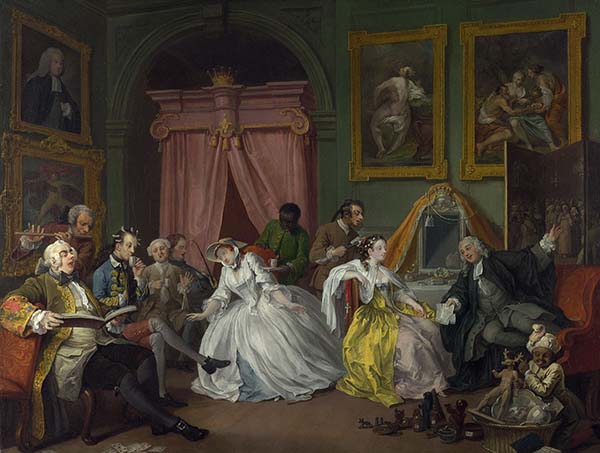
I think it all looks very light, in both senses, and it was. Also surprisingly luscious.

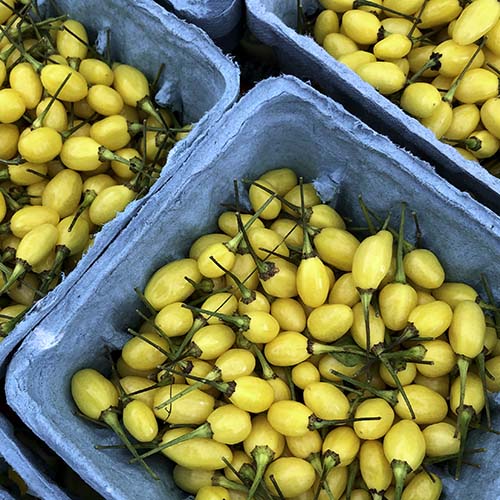
- four 3 1/2-ounce trimmed skate wings from P.E. & D.D. Seafood in the Union Square Greenmarket that day, coated all over with a local coarse polenta (‘Stone-Ground Polenta’ from Wild Hive Farm Community Grain Project), seasoned with local P.E. & D.D. sea salt and freshly ground black pepper, sautéed in a bit of Whole Foods Market Portuguese house olive oil and a bit of local butter, Vermont Creamery, for just under 3 minutes on each side inside a heavy enameled cast iron oven pan (they just barely fit), removed to the plates and kept warm while 1 to 2 tablespoons of more butter and one sliced red spring onion from Norwich Meadows Farm, 2 finely chopped tiny Brazil wax peppers from Eckerton Hill Farm, and a bit of chopped epazote from TransGenerational Farm were introduced into the pan and stirred over a now-lowered flame, just enough to allow the onion to sweat a bit, the heat turned off altogether and another tablespoon of butter added to the pan along with the juice from a little more than half of small organic California lemon from Chelsea Whole Foods (Sespe Creek Organics), the pan stirred for a bit to blend everything and make a proper sauce, which was poured over the skate wings and more epazote sprinkled on top
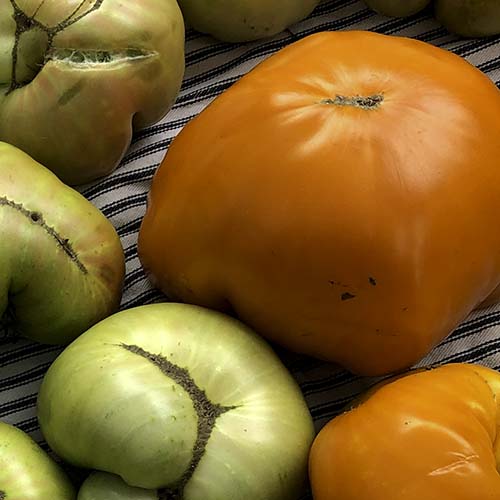
- one sliced orange/yellow heirloom tomato from Campo Rosso Farm, seasoned with salt and pepper, sautéed briefly in a little olive oil inside a small copper skillet, arranged on the plates with a little chopped fresh za’atar [origanum syriacum] from TransGenerational Farm

- the roots of one bunch of ‘French Breakfast’ radishes from Willow Wisp Farm, the greens having been removed and stored with them when they were first brought home, washed/scrubbed but not trimmed otherwise, split lengthwise into halves or quarters, sautéed rinsed in several changes of water and set aside, the radishes themselves washed, scrubbed, and cut into wedges, sautéed in a little olive oil inside a large, antique, high sided copper pot for a few minutes, one sliced Italian red tropea onion from Alewife Farm added near the end of the cooking, along with a pinch of peperoncino Calabresi secchia from Buon Italia, after which the reserved radish leaves, having been washed thoroughly in several changes of water, were introduced into the pan, stirred, and allowed to barely wilt, the mix sprinkled with salt and pepper, a tablespoon of white wine poured in and stirred with the radish until the liquid had evaporated
- the wine was an Oregon (Willamette Valley/Dundee Hills) white, Oregon Pinot Blanc 2016, ordered directly from Erath
- the music was a fantastic album of works by the remarkable Dutch composer Ivo Emmerik (b.1961) that includes his, ‘Documents Pour Servir De Canevas’ and ‘Birdstone’, both performed by the Ives Ensemble on the label, Composers Voice; this is his own site
